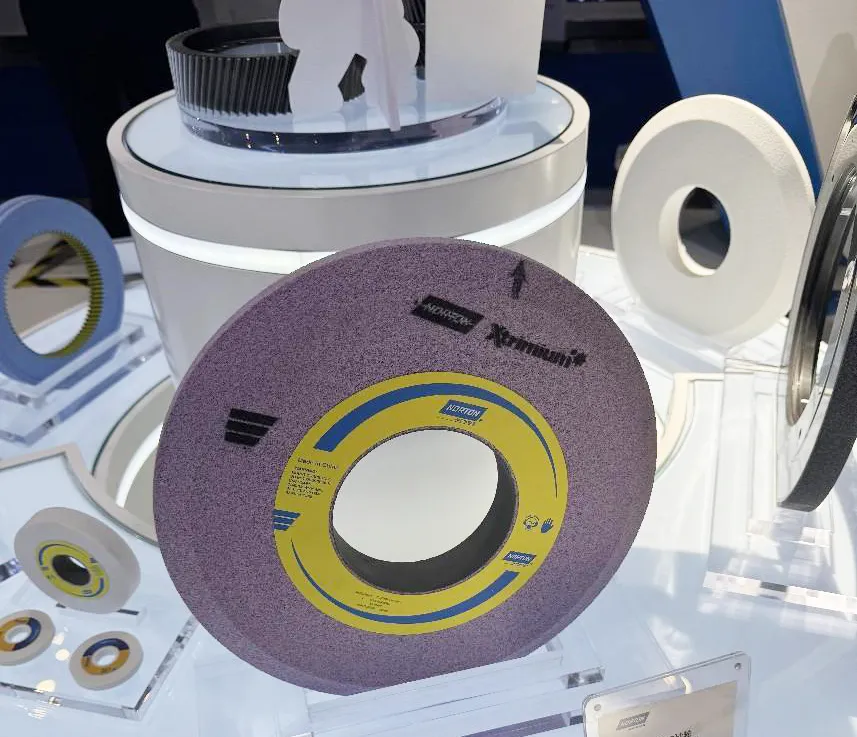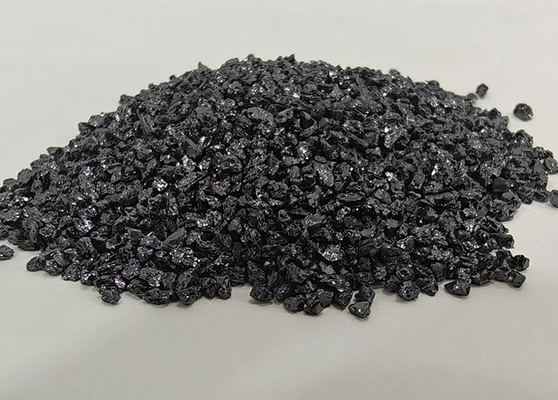Introduction to Abrasives and Grinding Tools
Abrasives and grinding tools are essential in manufacturing, metalworking, and various industrial processes. These materials remove excess material, shape surfaces, and achieve precise finishes. In B2B foreign trade, understanding their categories helps businesses select the right products for efficiency and cost-effectiveness.
This guide covers key abrasives like brown fused alumina and superhard materials like diamond abrasives. It explores technical aspects, operational principles, selection criteria, maintenance tips, and emerging trends to support informed purchasing decisions.
Abrasives: Types and Applications

Technical Aspects of Abrasives
Abrasives are hard substances used for grinding, polishing, or cutting. They vary in hardness, grain size, and composition. For instance, brown fused alumina features high toughness and is ideal for heavy grinding due to its aluminum oxide base.
White fused alumina offers purity and is less tough but provides a cooler cut, reducing heat damage. High alumina types excel in refractory applications with superior thermal resistance, while chromium corundum enhances durability in high-wear scenarios.
Zirconium corundum combines strength and fracture resistance for demanding tasks. Black fused alumina is cost-effective for general grinding, and garnet provides natural abrasiveness for eco-friendly options. Silicon carbide variants, like black and green, offer sharp cutting edges for non-ferrous metals.
Nitrides such as silicon nitride and boron carbide deliver extreme hardness for advanced applications. Steel shot and grit are metallic abrasives used in shot blasting for surface cleaning and preparation.
How Abrasives Work
Abrasives function through mechanical action where grains remove material via friction. For example, brown fused alumina grains fracture during use, exposing fresh cutting edges for continuous efficiency.
In operations, abrasives are embedded in tools or used loose. White fused alumina works well in precision grinding by minimizing thermal effects, while silicon carbide's crystalline structure enables rapid material removal in wet or dry processes.
Selection depends on workpiece material; harder abrasives like boron carbide suit ceramics, whereas softer ones like garnet are better for delicate surfaces. The process involves applying pressure and motion to achieve desired finishes.
Selection Criteria for Abrasives
When choosing abrasives, consider grain size, hardness, and shape. Brown fused alumina suits heavy-duty tasks due to its blocky grains, while white fused alumina is preferred for fine finishes on sensitive materials.
Assess compatibility with the workpiece; high alumina abrasives resist high temperatures for metal casting. Budget and volume needs matter—steel shot is economical for large-scale blasting, whereas premium options like silicon nitride justify costs for precision engineering.
Environmental factors, such as dust generation, should influence decisions. Always verify supplier certifications for quality and safety compliance in B2B transactions.
Maintenance Tips for Abrasives
Store abrasives in dry, cool environments to prevent moisture absorption, which can degrade performance. Regularly inspect for contamination, especially with steel shot, to maintain blasting efficiency.
After use, clean tools to remove residue, extending abrasive life. For silicon carbide, avoid mixing with incompatible materials to prevent chemical reactions. Proper handling reduces wear and ensures safety.
Future Trends in Abrasives
Innovations focus on sustainable abrasives, like recycled garnet, to reduce environmental impact. Nanotechnology is enhancing grain structures for better precision in micro-machining applications.
Expect growth in eco-friendly options, such as bio-based silicon carbide alternatives, driven by global regulations. AI integration for predictive maintenance will optimize abrasive use in smart factories.
Bonded Abrasives: Products and Usage
Technical Aspects of Bonded Abrasives
Bonded abrasives consist of abrasive grains held by a bonding agent, forming shapes like wheels or stones. Ceramic grinding wheels offer high porosity for coolant retention and are made from aluminum oxide for durability.
Resin-bonded cutting wheels provide flexibility and are used for precise cuts on metals. Oil stones are fine-grained for honing edges, while mounted points and polishing blocks deliver targeted grinding on intricate surfaces.
How Bonded Abrasives Work
These tools operate by rotating at high speeds, with the bond matrix holding grains in place until they wear and expose new ones. Ceramic wheels excel in heavy grinding by dissipating heat effectively.
Resin wheels work through vibration dampening, ideal for thin materials, while oil stones use manual pressure for controlled abrasion in sharpening tasks.
Selection Criteria for Bonded Abrasives
Choose based on bond type and grit size; ceramic wheels for tough jobs, resin for speed. Consider machine compatibility and safety ratings for industrial use.
Factor in cost per use; high-quality oil stones last longer, reducing downtime in B2B operations.
Maintenance Tips for Bonded Abrasives
Dress wheels regularly to maintain shape and remove glazing. Store in protective cases to avoid damage, and balance wheels before use to prevent vibrations.
Future Trends in Bonded Abrasives
Advancements include hybrid bonds for better performance in composites. Expect 3D-printed bonded abrasives for custom designs in aerospace and automotive sectors.
Coated Abrasives: Features and Applications
Technical Aspects of Coated Abrasives
Coated abrasives have grains adhered to a backing like cloth or paper. Sandpaper and sanding belts use aluminum oxide for general sanding, while sanding discs offer flexibility for curved surfaces.
Flap wheels provide consistent finishing through layered flaps, reducing scratches.
How Coated Abrasives Work
They remove material via direct contact, with the backing supporting the grains. Sanding belts track material efficiently in high-speed machines.
Selection Criteria for Coated Abrasives
Select by backing material and grit; cloth-backed for durability, paper for fine work. Ensure adhesion quality for longevity in trade applications.
Maintenance Tips for Coated Abrasives
Clean residues after use and store flat to prevent curling. Replace worn belts promptly to avoid inefficiency.
Future Trends in Coated Abrasives
Water-resistant coatings and automated dispensing systems are emerging for greener manufacturing.
Superhard Materials and Products
Technical Aspects of Superhard Materials
Superhard materials like diamond and cubic boron nitride offer exceptional hardness. Diamond abrasives are used for cutting hard materials, while polycrystalline diamond provides wear resistance.
Cubic boron nitride suits ferrous metals, and composites enhance tool life.
How Superhard Materials Work
They remove material through high-precision cutting, with diamond's structure enabling micro-level accuracy.
Selection Criteria for Superhard Materials
Choose based on thermal stability; diamond for non-ferrous, boron nitride for steel. Prioritize purity for optimal performance.
Maintenance Tips for Superhard Materials
Use coolants to prevent overheating and inspect for cracks regularly.
Future Trends in Superhard Materials
Synthetic production and nanotechnology will drive cost reductions and new applications in electronics.
Related Equipment and Other Categories
Technical Aspects of Related Equipment
Equipment like sandpaper production lines and mixing machines support abrasive manufacturing. Refractory materials, such as ceramic fibers, provide heat resistance in kilns.
Engineering ceramics include raw materials like zirconia for high-strength components.
How These Products Work
Machines automate processes, while refractories insulate industrial furnaces effectively.
Selection Criteria
Focus on energy efficiency and material compatibility for equipment. Choose refractories based on thermal properties.
Maintenance Tips
Regular calibration for machines and proper storage for raw materials.
Future Trends
Automation and sustainable materials will dominate, with advancements in precision casting products.
Frequently Asked Questions
What is the main difference between brown and white fused alumina? Brown fused alumina is tougher for heavy grinding, while white fused alumina offers a purer cut with less heat buildup, making it suitable for precision work.
How do I select the right abrasive for metal polishing? Consider the metal's hardness and desired finish; use silicon carbide for fast removal on non-ferrous metals and aluminum oxide for ferrous ones.
What maintenance is needed for grinding wheels? Dress wheels frequently to maintain sharpness and balance them to reduce vibration, ensuring safe and efficient operation.
What trends are shaping the abrasive industry? Sustainability and smart technology, like AI for predictive maintenance, are key, along with eco-friendly materials for global compliance.
Comparison of Common Abrasive Materials
| Abrasive Type | Material Base | Hardness (Mohs) | Typical Applications | Advantages |
|---|---|---|---|---|
| Brown Fused Alumina | Aluminum Oxide | 9.0 | Heavy-duty grinding, metal processing | High toughness, cost-effective |
| White Fused Alumina | High-purity Al₂O₃ | 9.0 | Precision grinding, polishing | Cool cutting, high purity |
| Silicon Carbide (Black/Green) | SiC | 9.2–9.5 | Non-ferrous metals, ceramics | Sharp, fast cutting |
| Boron Carbide | B₄C | 9.5 | Armor, nozzles, hard ceramics | Extreme hardness, chemical resistance |
| Diamond | Carbon | 10.0 | Precision cutting, glass, electronics | Highest hardness, ultra-precision |
| Cubic Boron Nitride (CBN) | BN | 9.8 | Grinding of steel, ferrous metals | Thermal stability, long life |
| Garnet | Natural silicate | 7.5–8.5 | Waterjet cutting, blasting | Eco-friendly, reusable |
Conclusion
In summary, abrasives and related products form the backbone of modern manufacturing, offering versatility across industries. By understanding technical details, selection processes, and future innovations, B2B professionals can enhance productivity and competitiveness. This guide equips traders with knowledge to navigate foreign markets effectively, fostering long-term success through informed choices and sustainable practices.
Request a Quote or Sample
Popular Products
Grünes Siliziumkarbid
View DetailsSchwarzes Siliziumkarbid
View Details